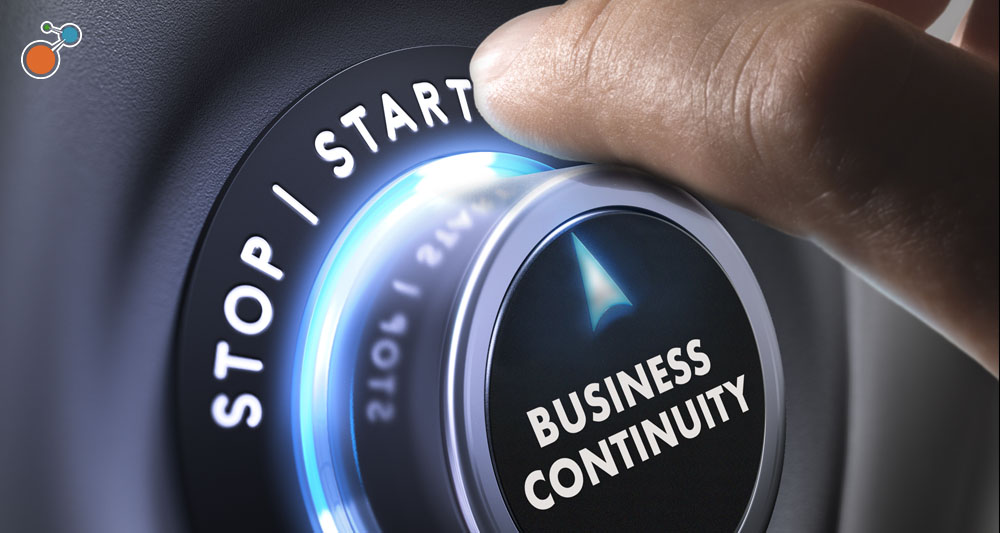Disruption is an inevitable part of doing business, but it doesn’t have to mean the end of your business. What is business continuity – and how can it protect your organization?
Business continuity is the process to minimize the risk of disruption. Specifically, business continuity means working to decrease the likelihood of a disruptive incident and preparing your organization to continue delivering its most essential products and services if a disruption were to occur. Business continuity is sometimes also known as continuity planning, organizational resilience, or business continuity management.
Effective business continuity management helps leaders feel more confident the organization can respond and recover no matter the scale or time of a disruption.
Why Do You Need Business Continuity?
As the world becomes increasingly unpredictable and filled with cascading crises, your ability to remain resilient protects your people, your customers, your stakeholders, and your bottom line. Whether it’s unscheduled technology downtime, a supply-chain disruption, a cyberattack, a natural disaster, or a man-made event, organizations of all sizes need to be ready for just about anything.
Organizations typically build a business continuity program because:
- Customers demand it (most common in B2B).
- Regulators demand It (most common in banking and energy industries).
- Board or senior executives demand it (recognizing their fiduciary responsibility).
However, business continuity shouldn’t be important just because others demand it. Ensuring the resilience of your organization shows your employees and customers that you’re committed to being there no matter what. It can be used as a differentiator when selling your products. Resilience also decreases downtime, protects your brand reputation, and builds an internal culture of flexibility.
Before you jump into plans and risks, you must determine why business continuity is important to your organization. Starting here will give purpose to your activities and establish a common mission to get behind.
How Do You Get Started with Business Continuity?
After determining why business continuity is important, your next step is determining who should be involved and what the scope of your program should be.
Build a business continuity steering committee comprised of leaders from the departments that contribute most to producing and delivering your key product and services. An executive sponsor is an important member of this committee and will act as your liaison between the team and other leaders or your board.
Next, define what your key products and services are and identify the risks to their delivery. These are most often the people, technology, facilities, equipment, third parties, and other resources needed for delivery.
Once resources are identified, implement strategies that protect those resources. How would you pivot to remote work, for instance, when locations aren’t available? How would you switch to manual processes during downtime? Do you have alternate facilities or suppliers as backup?
From there, you can document business continuity plans that outline how to implement recovery strategies for each. Conducting a business impact analysis (BIA) will help inform what business processes each product and services relies on. Use this information to build your plans and establish recovery times.
How Do You Know if Your Plans Are Successful?
Perform regular exercises to confirm that the plans and strategies your team has built work as expected. When conducting exercises, keep an eye out for gaps or single points of failure. These are the things that will trip you up amid recovery. When building your program, consider aligning to industry standards such as ISO 22301 to ensure you’re including all the recommended program elements.
Note that this entire process is not a one-and-done experience. Revisit these steps at least annually – and always after a major event has occurred and recovery has been completed. The learnings from the real-life moments are most valuable for understanding what’s working and not working in your program.
How Can Business Continuity and Resilience Software Help?
When first building a business continuity program, many organizations default to spreadsheets to track their plans and procedures. However, as your company grows and business operations become more complex, spreadsheets become increasingly less effective because of the amount of manual work required.
Software can automate and streamline your business continuity and resilience processes. Software also offers benefits such as in-depth analytics and built-in communication. You can complete daily tasks more efficiently without the manual processes that come with managing a program in spreadsheets or on paper.
The time saved can then be devoted to refining strategy. How can your program be improved? What new techniques can you apply? How can you build a culture of resilience around your organization?
The data analysis you get with software also allows you to clearly communicate the effectiveness of your program to executives and key stakeholders. And software makes it easier to collaborate with contributors through task assignments, notifications, mobile applications, and built-in chat functionality.
What is business continuity? It’s protecting your organization for the long term by focusing on preparation and recovery for both expected and unexpected disruptions. Being vigilant about your organization’s resilience is the marker of good business.
Download our template, The Business Continuity Business Case, for help making your case for investing in a business continuity and resilience software, and check out Riskonnect’s Business Continuity & Resilience solution.





